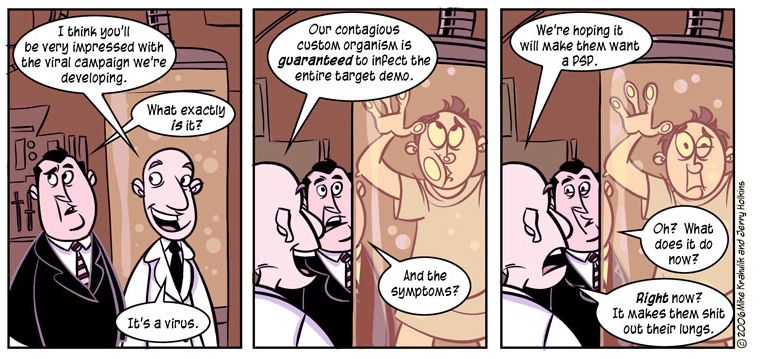In this holiday season, the year is almost over and most of us are running like crazy to wrap up our work in time and to buy some gifts for our siblings and friends. Last week, the buzzword that stuck to my head was “Groupon” which finally landed to Montreal. In the meantime, I ate a bad meal at a restaurant I went because of a Tuango ticket I bought two months ago on an impulsive buying move (damn marketers!). Therefore, I won’t discuss about Groupon since you should already be fed up with that news! Instead, I decided to give you my two cents, as Kent Brockman would say, about a marketing campaign that has landed in Europe earlier this year, that is to say, the “Mr and Mrs Incredible” Disneyland Paris campaign. So let’s jump feet first.
The situation
It is a well-documented fact that Disneyland Paris has had financial difficulties since its creation in 1992, due to unclear managerial objectives, strategies and goals, a questionable location and a ferocious nearby indirect competition. However, at the beginning of July 2010, Disneyland Paris decided to launch a marketing campaign that caught my attention, but unfortunately it caught my attention after I went to Paris in June 2010.
The campaign’s idea
As part of the Disneyland Paris 2010 campaign, multiple emails where sent to influential bloggers that may help to spread the word that Disneyland Paris is changing. Here is the message that was sent to some of my fellow bloggers in the United Kingdom (UK):
“Mr and Mrs Incredible will be landing in your Facebook Page to celebrate the New Generation Festival in Disneyland Paris. Even worse: they kiss at the end. In front of all your friends.
Go to www.theyarelanding.co.uk, choose your favorite characters and make them land in your Facebook page, for the best and mostly for the worst. This is gonna be rough!”
The micro-website for this campaign offers you to make one of three groups of characters land to your Facebook account in an unconventional way, and in one of four languages (French, English, Italian and Spanish). However, I must admit that the selected URL for the campaign is not really a good choice, but it could have been worse for sure compared to some micro-website URLs I can observe at metro stations every morning. Furthermore, the creative usage of Facebook connect (see the video below) is hitting you right in the face whatever your nationality is. Furthermore, aside from the creative aspect of this campaign there are multiple points of discussion concerning the positioning of this campaign that could be taken in consideration to judge the effectiveness of this campaign.
Point 1 – The competition
When individuals/tourists are flying to Paris, it is generally not to visit an amusement park but more to visit museums, monuments, and/or to enjoy the shopping, the great food, the crazy metro and the French accent. Thus, putting Disneyland Paris on the consideration set of tourists and also Parisians is not an easy task, especially since amusement park are not as present in the European tradition as they are in the North American one. Thus, for the emotional appeal, I like this campaign.
Point 2 – The 3Ws of targeting
Moreover, the 3Ws of marketing could be analyzed, that is to say: (1) when to target? (2) who to target? and (3) where to target?
When to target?
In the case of amusement parks, at the beginning of the season and maybe some time in the middle should be the optimal moment to launch a marketing campaigns, but most budget should focus at the beginning of the season. This campaign was officially launched on July 2nd 2010 which is in the middle of the season.
Who to target?
The teens, the kids or the parents? That is the question. So who is going to amusement parks accompanied with parents? The answer, kids with age lower than 12, which imply that most of their parents are aged between 25 and 40. Thus, targeting these parents may be the solution! And what about the teens? They are coming without their parents anyway, but they may be mainly local consumers. All in all, most of these consumers have Facebook and are heavily present online, which suggests that that the use of Facebook connect is an appropriate tool in this case.
Where to target?
So where to find potential visitors? Where are these people physically coming from and how to find them? For the 25 to 40 years old young couple, they may be mostly in France, but also in Belgium, Germany, Italy and Spain. Don’t forget the United States since they are rollercoaster fanatics. Thus, the campaign could have included a version for the Americans (US) and the Germans. I don’t think it would have taken that much time. And what about Japanese which you find everywhere in Paris? The problem is that they are not necesarily on Facebook but mainly on Mixi, which could be labelled as the Japanese Facebook.
Point 3 – The main objectives
For this type of campaign, there are mainly two objectives which are: (1) to increase the number of tickets sold for the amusement park, and (2) to increase brand awareness. The first objective is a short-term one, which is to sell more tickets for the amusement park right away before a potential bankruptcy can occur, while the second one is more a long-term one, which is to increase the amount of individuals talking about the campaign and the amusement park to eventually get into the consideration set of these individuals when they will be heading to Paris.
Conclusion
So what do you think of this campaign? If you would have planned a trip to Paris this year, would it have an impact on your decision to go to Disneyland Paris with friends, kids or family?
Enjoy the ride!
Jean-Francois
